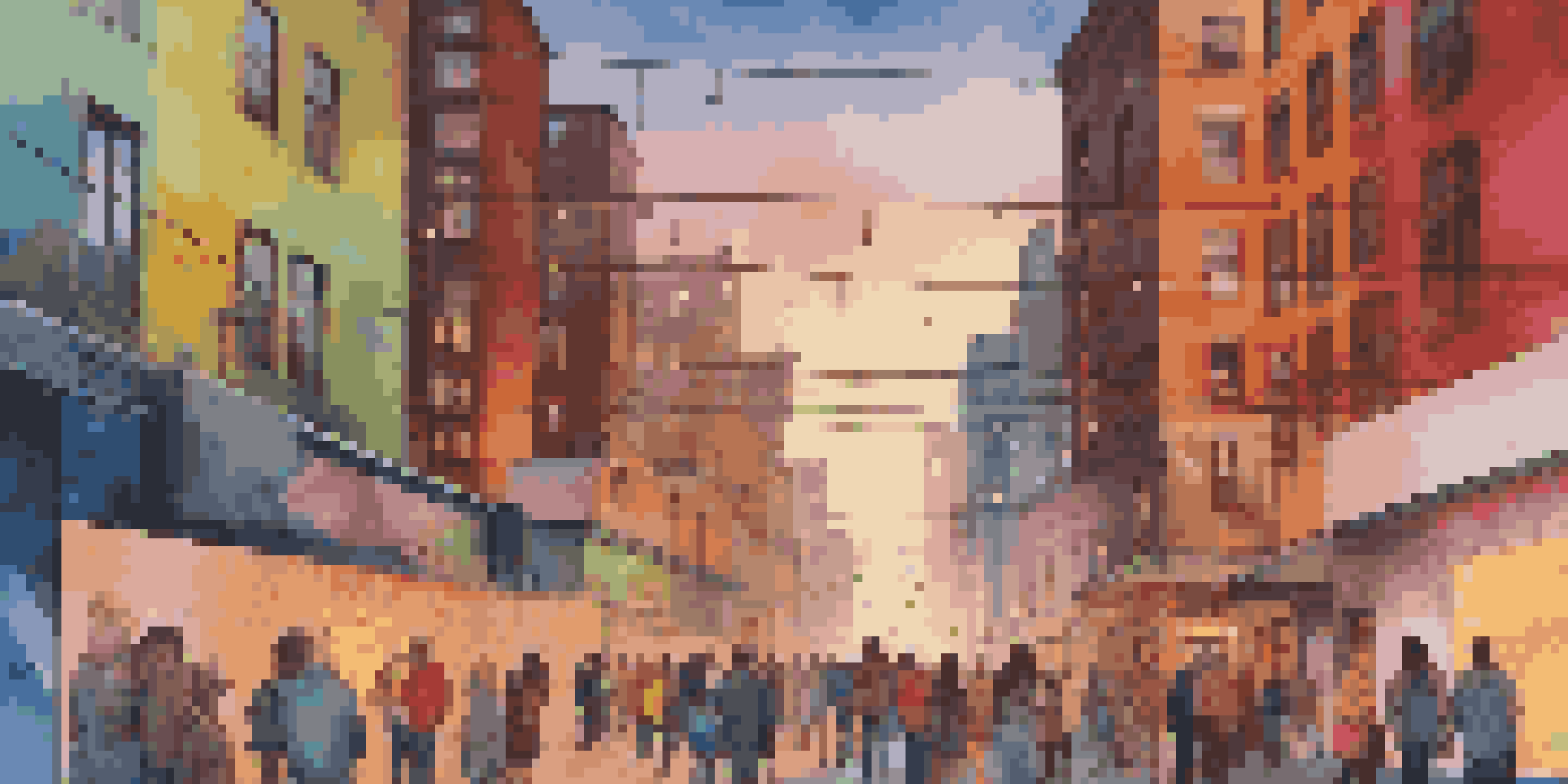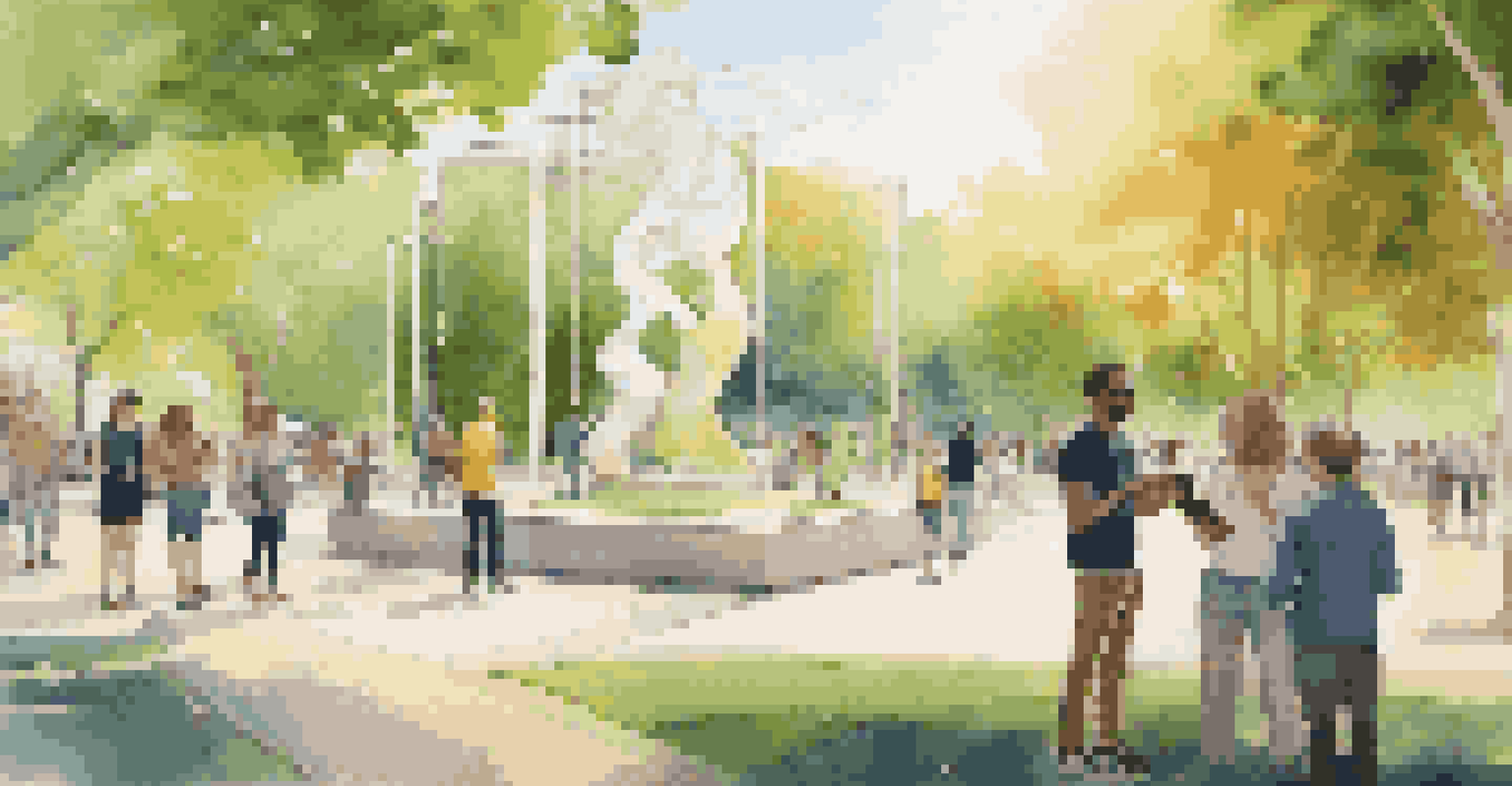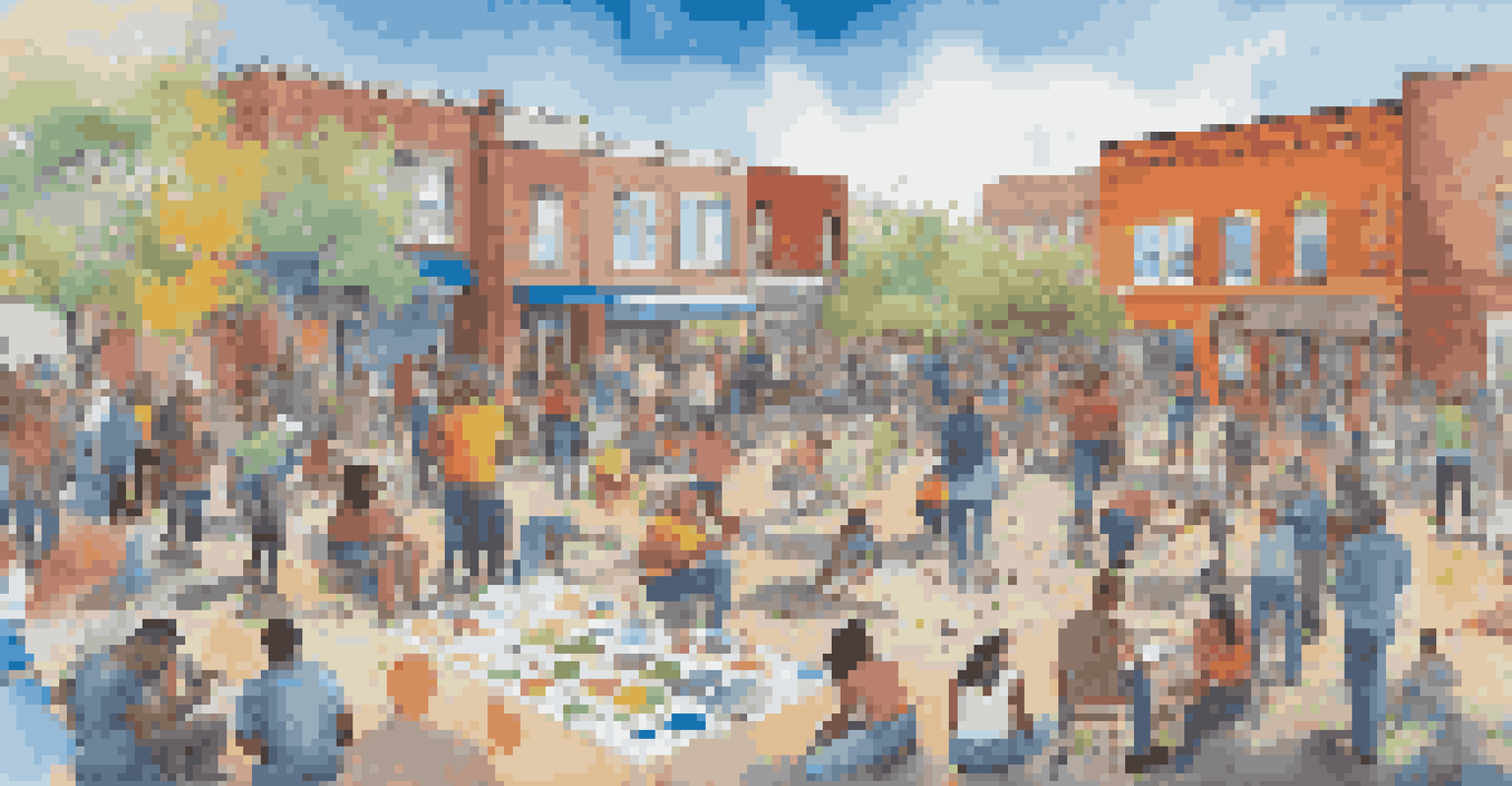Public Art and the Digital Age: New Mediums and Platforms

What is Public Art in the Digital Era?
Public art has traditionally been a physical manifestation of creativity, often found in parks, plazas, and buildings. However, the digital age has expanded this definition, allowing artists to engage with audiences in new, innovative ways. Now, public art can exist in virtual spaces, making it more accessible and interactive than ever before.
Art is what you can get away with.
With the rise of social media and digital platforms, artists can share their work with a global audience in real-time. This shift not only democratizes art but also encourages diverse voices to contribute to the public art conversation. For instance, a mural in a city can be showcased through an Instagram post, reaching thousands instantly.
Moreover, digital tools empower artists to experiment with mixed media, combining traditional techniques with modern technology. Think of augmented reality installations that transform a simple wall into an interactive canvas, inviting passersby to engage with the artwork in a way that was previously unimaginable.
The Role of Social Media in Public Art
Social media platforms like Instagram and TikTok have become crucial for public art promotion. Artists can showcase their projects and engage with the community directly, fostering a sense of connection. This interaction often leads to increased visibility and support for public art initiatives.

In addition, hashtags and location tags help art enthusiasts discover new pieces nearby, creating a digital roadmap for public art exploration. Imagine strolling through your city while your phone guides you to hidden murals or installations, all thanks to social media sharing.
Digital Art Expands Public Engagement
The digital era allows artists to create interactive and immersive experiences that engage audiences in new ways.
Furthermore, social media allows for the documentation of public art's evolution over time. Artists can share behind-the-scenes processes, offering insights into their creative journeys and inviting audiences to appreciate the work on a deeper level.
Emergence of Digital Art Installations
Digital art installations are a fascinating aspect of public art in the digital age. These pieces often incorporate video, projection mapping, and interactive elements, allowing viewers to become part of the artwork. This engagement transforms spectators into active participants, shifting the traditional dynamics of art appreciation.
The best way to predict the future is to create it.
Take, for instance, the famous 'The Night Cafe' installation by Vincent van Gogh, which was transformed into a 3D experience using virtual reality. Visitors can immerse themselves in the painting, exploring its vibrant colors and brush strokes as if they were stepping into the artist's world.
Such digital installations challenge our understanding of public art, blurring the lines between the physical and virtual realms. They invite us to reconsider how we interact with art and where we find it in our everyday lives.
Augmented Reality: Bridging the Physical and Digital
Augmented reality (AR) is revolutionizing how we experience public art. By overlaying digital images onto the physical world, AR creates an interactive layer that enhances our understanding and appreciation of artworks. This technology allows viewers to engage with art pieces in a more immersive manner.
For example, artists can create AR experiences that come alive through smartphones or tablets, revealing hidden messages or animations within their work. Imagine pointing your device at a mural and watching it transform, adding vibrant colors or animations that weren't visible before.
Social Media Enhances Visibility
Platforms like Instagram and TikTok help artists promote their work, fostering community connections and increasing public art discovery.
This fusion of digital and physical art not only captivates audiences but also invites them to participate in the storytelling process. Each interaction becomes a unique experience, fostering a deeper connection between the viewer and the art.
Crowdsourcing Public Art Projects
The digital age has made it easier for communities to get involved in public art projects through crowdsourcing. Artists can seek funding and ideas directly from the public, creating a collaborative environment that values community input. This approach not only democratizes the artistic process but also strengthens community bonds.
Platforms like Kickstarter and GoFundMe allow artists to pitch their projects and gather support from individuals who resonate with their vision. This funding model empowers artists to create works that reflect the community's identity and values.
Moreover, crowdsourcing encourages a sense of ownership among community members. When people are involved in the creation process, they are more likely to engage with and care for the art, fostering a lasting relationship between the artwork and the audience.
Challenges and Critiques of Digital Public Art
While the digital age has opened up new possibilities for public art, it also presents challenges and critiques that artists must navigate. One concern is the transient nature of digital art, as it can be easily altered or removed from its original context. This raises questions about the permanence and legacy of digital installations.
Additionally, the accessibility of digital platforms can create disparities in visibility. Not all artists have the same level of access to technology or social media, which can lead to an uneven playing field. This disparity might result in underrepresented voices being overshadowed by more prominent artists.
Crowdsourcing Shapes Community Art
Crowdsourcing enables community involvement in public art projects, ensuring that artworks reflect local identities and values.
Finally, there is the issue of authenticity. As public art increasingly incorporates digital elements, some critics argue that it can dilute the emotional and cultural significance that traditional public art embodies. Finding a balance between innovation and preserving the essence of public art is an ongoing challenge for creators.
The Future of Public Art in a Digital World
Looking ahead, the future of public art in the digital world is both exciting and uncertain. As technology continues to evolve, artists will likely find new ways to engage audiences and push the boundaries of creativity. This will open up even more opportunities for collaboration and innovation in the public art sphere.
We can expect to see more hybrid installations that blend physical and digital elements, creating immersive experiences that captivate viewers. Imagine walking through a park where the sculptures not only stand still but also tell stories through augmented reality.

Ultimately, the future of public art will hinge on our ability to adapt and embrace these changes. By staying open to new ideas and technologies, artists and communities can foster a vibrant public art scene that reflects the dynamic nature of our digital age.